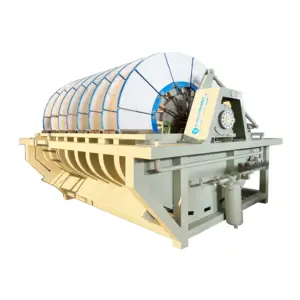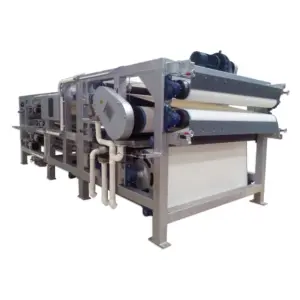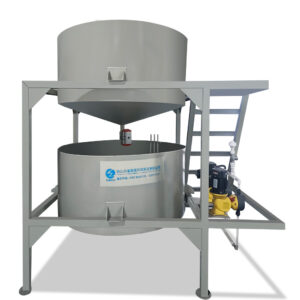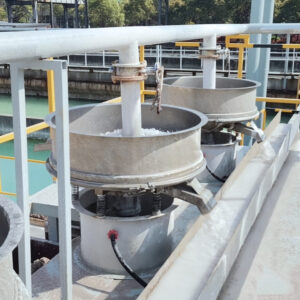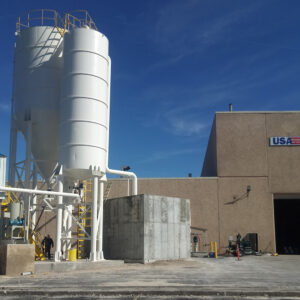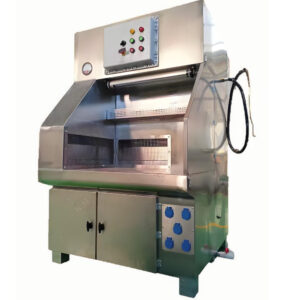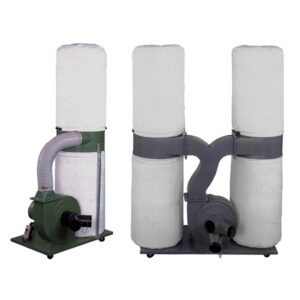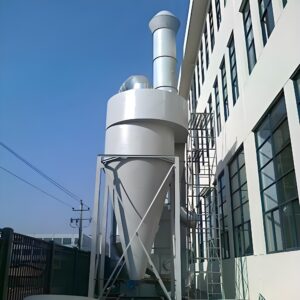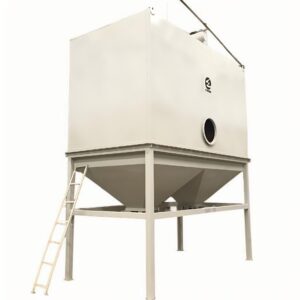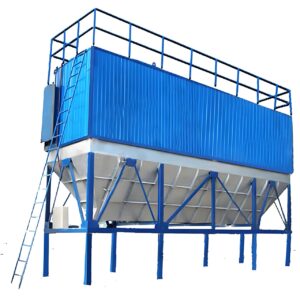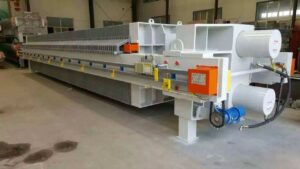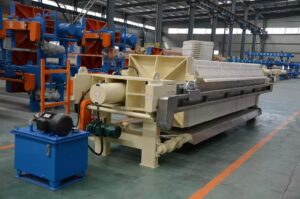Downdraft tables are essential tools in many industrial and woodworking settings, providing a crucial means of dust and debris control. However, the effectiveness of these tables hinges significantly on their foundation requirements. A well-constructed foundation ensures optimal performance, longevity, and safety of the downdraft table. This article delves into the intricacies of downdraft table foundation requirements, offering insights for both professionals and DIY enthusiasts.
When considering the foundation for a downdraft table, several key factors come into play. These include the table's size and weight capacity, the airflow requirements, the materials used in construction, and the specific needs of the workspace. Additionally, factors such as vibration control, leveling, and integration with existing dust collection systems must be taken into account.
As we explore the various aspects of downdraft table foundations, we'll uncover the best practices for ensuring a stable, efficient, and safe setup. From the basic structure to advanced features, this comprehensive guide will equip you with the knowledge needed to create or select the perfect foundation for your downdraft table.
The foundation of a downdraft table is crucial for its performance and safety, requiring careful consideration of factors such as size, weight capacity, airflow, and workspace integration.
What are the Key Components of a Downdraft Table Foundation?
The foundation of a downdraft table is more than just a simple base. It's a complex system designed to support the table's function while meeting specific requirements. At its core, a downdraft table foundation typically consists of a sturdy frame, a tabletop with perforations or a grate, and an underlying chamber or plenum.
The frame serves as the primary support structure, bearing the weight of the table and any materials placed on it. It must be robust enough to withstand constant use and potential vibrations from equipment. The tabletop, often made of materials like steel or high-density plastic, features carefully designed openings to facilitate downward airflow.
Beneath the tabletop lies the heart of the downdraft system – the plenum. This chamber is crucial for directing air and debris towards the dust collection system. Its design significantly impacts the table's efficiency and must be carefully considered during the foundation planning phase.
A well-designed downdraft table foundation incorporates a strong frame, a perforated tabletop, and a carefully engineered plenum to ensure optimal dust collection and table stability.
| Component | Material | Function |
|---|---|---|
| Frame | Steel or Aluminum | Structural support |
| Tabletop | Perforated Steel or HDPE | Work surface and air intake |
| Plenum | Sheet Metal | Airflow direction and debris collection |
When planning the foundation for your downdraft table, it's essential to consider each of these components carefully. The frame must be sturdy enough to support your specific needs, while the tabletop should be designed with the right balance of openings for effective dust capture without compromising work surface integrity. The plenum's design is critical for maintaining consistent airflow across the entire table surface.
Ultimately, the success of your downdraft table depends on how well these components work together. A thoughtfully designed foundation ensures that your table will perform efficiently, providing a clean and safe working environment for years to come.
How Does Table Size Affect Foundation Requirements?
The size of a downdraft table plays a crucial role in determining its foundation requirements. Larger tables naturally require more robust foundations to support their weight and maintain stability during use. But it's not just about weight – size also impacts airflow dynamics and the overall efficiency of the dust collection system.
When considering table size, it's important to think about both the surface area and the depth of the table. A larger surface area means more space for work but also requires a more powerful dust collection system to maintain effective suction across the entire table. The depth of the table affects the plenum design, which in turn influences airflow patterns and efficiency.
For larger tables, the foundation must be designed to prevent sagging or flexing under load. This often involves additional support structures or thicker materials in the frame construction. Conversely, smaller tables may allow for a simpler foundation design but still require careful consideration of airflow and stability.
The size of a downdraft table directly impacts its foundation requirements, with larger tables necessitating stronger support structures and more powerful dust collection systems to maintain efficiency.
| Table Size | Foundation Type | Support Requirements |
|---|---|---|
| Small (< 4 ft²) | Simple frame | Minimal additional support |
| Medium (4-16 ft²) | Reinforced frame | Cross bracing, thicker materials |
| Large (> 16 ft²) | Heavy-duty structure | Multiple support points, potential floor anchoring |
When planning your downdraft table foundation, it's crucial to accurately assess your size requirements. Consider not only your current needs but also potential future expansion. A foundation that's designed to accommodate growth can save you time and resources in the long run.
Remember that the table size also affects the overall footprint of your setup. Ensure that your workspace can accommodate not just the table itself, but also any necessary clearance for comfortable operation and maintenance. By carefully considering these factors, you can create a foundation that perfectly suits your downdraft table's size and your specific needs.
What Materials are Best for Downdraft Table Foundations?
Selecting the right materials for your downdraft table foundation is crucial for ensuring durability, performance, and safety. The choice of materials impacts not only the table's structural integrity but also its weight, cost, and ease of maintenance. Let's explore some of the most common and effective materials used in downdraft table foundations.
Steel is often the go-to material for industrial-grade downdraft tables. Its strength and durability make it ideal for heavy-duty applications. Stainless steel, in particular, offers excellent corrosion resistance, making it suitable for environments where moisture or chemicals might be present. However, steel can be heavy and more expensive than some alternatives.
Aluminum is another popular choice, especially for applications where weight is a concern. It offers a good balance of strength and lightness, and its corrosion resistance is an added benefit. Aluminum foundations are often easier to move or reconfigure, which can be advantageous in dynamic workshop environments.
For the tabletop itself, materials like high-density polyethylene (HDPE) or phenolic resin are sometimes used. These materials offer good durability and chemical resistance while being lighter than metal alternatives. They can also provide a smoother work surface, which can be beneficial for certain applications.
Steel and aluminum are the most common materials for downdraft table foundations, with each offering unique benefits in terms of strength, weight, and corrosion resistance. The choice depends on specific application requirements and environmental factors.
| Material | Pros | Cons |
|---|---|---|
| Steel | High strength, durability | Heavy, can corrode |
| Stainless Steel | Corrosion resistant, durable | Expensive |
| Aluminum | Lightweight, corrosion resistant | Less strong than steel |
| HDPE | Chemical resistant, smooth surface | Less durable than metal |
When choosing materials for your downdraft table foundation, consider the specific demands of your workspace. If you're dealing with heavy loads or abrasive materials, a steel foundation might be your best bet. For a more mobile setup or in environments where weight is a concern, aluminum could be the ideal choice.
It's also worth considering hybrid approaches. For example, you might use a steel frame for strength and stability, paired with an HDPE tabletop for a smooth, chemical-resistant work surface. The key is to balance the properties of different materials to create a foundation that meets all your needs.
Remember that the choice of materials can also affect the cost and maintenance requirements of your downdraft table. While more expensive materials might have a higher upfront cost, they could save money in the long run through increased durability and reduced maintenance needs. PORVOO offers a range of high-quality materials for downdraft table foundations, ensuring you can find the perfect fit for your specific requirements.
How Important is Airflow in Foundation Design?
Airflow is a critical factor in the design of downdraft table foundations, playing a pivotal role in the table's overall effectiveness. The foundation's design must facilitate optimal airflow to ensure efficient dust and debris capture, making it a key consideration in the planning and construction process.
The primary function of a downdraft table is to pull air downward, capturing dust and debris before it can spread into the surrounding environment. To achieve this, the foundation must be designed with a clear understanding of airflow dynamics. This includes considering factors such as the size and distribution of perforations in the tabletop, the shape and volume of the plenum beneath, and the connection to the dust collection system.
A well-designed foundation will promote even airflow across the entire table surface. This is crucial for preventing "dead spots" where dust might accumulate due to insufficient suction. The plenum, in particular, plays a vital role in directing airflow and should be carefully engineered to maintain consistent suction across the table.
Proper airflow design in a downdraft table foundation is essential for efficient dust capture and overall table performance. It requires careful consideration of factors such as perforation patterns, plenum design, and dust collection system integration.
| Airflow Consideration | Impact on Performance |
|---|---|
| Perforation Size | Affects suction strength and particle size capture |
| Perforation Pattern | Influences evenness of airflow across table surface |
| Plenum Shape | Directs airflow and impacts overall efficiency |
| Dust Port Size | Determines maximum airflow capacity |
When designing your downdraft table foundation with airflow in mind, consider the specific needs of your application. For fine dust, smaller perforations might be necessary, while larger debris might require bigger openings. The shape of the plenum can also significantly impact airflow, with many designs incorporating a sloped or V-shaped bottom to direct air towards the dust port.
It's also important to consider the capacity of your dust collection system. The foundation design should match the airflow capabilities of your system to ensure optimal performance. Undersized dust collection can lead to poor suction and reduced efficiency, while an oversized system might be unnecessarily costly to operate.
Remember that airflow requirements can vary depending on the type of work being done on the table. For instance, sanding operations might require different airflow characteristics compared to cutting or grinding. A versatile foundation design that can accommodate different airflow needs can be particularly valuable in multi-purpose workshops.
By prioritizing airflow in your downdraft table foundation design, you can ensure that your table performs efficiently and effectively, providing a cleaner and safer working environment. The Downdraft table foundation requirements offered by industry leaders take these factors into account, providing solutions that optimize airflow for various applications.
What Safety Features Should be Incorporated into the Foundation?
Safety is paramount when it comes to downdraft table foundations. A well-designed foundation not only ensures the table's effectiveness but also protects users from potential hazards. Several key safety features should be incorporated into the foundation design to create a secure working environment.
One of the primary safety considerations is stability. The foundation must be sturdy enough to prevent tipping or shifting, even when heavy materials are placed on one side of the table. This often involves a wide base, potentially with the option for floor anchoring in cases where extreme stability is required.
Electrical safety is another crucial aspect. If the downdraft table includes powered components, the foundation should incorporate proper grounding and insulation to prevent electrical hazards. This is particularly important in environments where conductive materials or liquids might be present.
Fire safety should also be considered, especially in applications where sparks or hot debris might be generated. The foundation materials should be fire-resistant, and the design should minimize the accumulation of potentially flammable dust or debris.
Safety features in downdraft table foundations are critical and should include stability measures, electrical safety components, and fire-resistant materials to ensure a secure working environment.
| Safety Feature | Purpose |
|---|---|
| Wide Base | Prevents tipping and improves stability |
| Floor Anchoring | Provides additional stability for heavy-duty applications |
| Electrical Grounding | Protects against electrical hazards |
| Fire-Resistant Materials | Reduces fire risk in high-heat applications |
| Smooth Edges | Prevents cuts and scrapes during use and maintenance |
When incorporating safety features into your downdraft table foundation, it's important to consider the specific risks associated with your application. For instance, if you're working with fine, combustible dust, you might need to incorporate explosion-proof features into the foundation design.
Ergonomics also plays a role in safety. The foundation should support a table height that minimizes strain on users, potentially including adjustable height features for versatility. Smooth edges and corners can prevent accidental cuts or scrapes during use or maintenance.
Regular maintenance access is another safety consideration. The foundation should be designed to allow easy access to all components for cleaning and maintenance, reducing the risk of dust accumulation and ensuring all safety features remain functional over time.
Remember that safety requirements can vary depending on your location and industry. Always consult local regulations and industry standards when designing your downdraft table foundation to ensure compliance with all relevant safety guidelines.
By prioritizing these safety features in your foundation design, you can create a downdraft table that not only performs well but also provides a safe and comfortable working environment for all users.
How Does the Foundation Affect Noise and Vibration Control?
Noise and vibration control are often overlooked aspects of downdraft table foundation design, yet they play a significant role in creating a comfortable and efficient work environment. The foundation's structure and materials can greatly influence the table's noise levels and vibration characteristics, impacting both user comfort and equipment longevity.
A poorly designed foundation can amplify noise from the dust collection system or from work being performed on the table surface. This can lead to a noisy work environment, potentially causing hearing fatigue or even long-term hearing damage. Additionally, excessive vibration can affect the precision of work being done on the table and may cause premature wear on both the table and the tools being used.
To address these issues, the foundation should incorporate vibration-dampening materials and design elements. This might include rubber or neoprene pads between the table and its support structure, or the use of vibration-absorbing materials in the construction of the foundation itself.
Effective noise and vibration control in downdraft table foundations is crucial for creating a comfortable work environment and prolonging equipment life. This can be achieved through the use of dampening materials and strategic design elements.
| Control Measure | Effect |
|---|---|
| Rubber Mounts | Absorb vibrations from equipment |
| Insulated Plenum | Reduces noise from airflow |
| Reinforced Frame | Minimizes flexing and vibration transfer |
| Sound-Absorbing Materials | Lowers overall noise levels |
When designing your downdraft table foundation with noise and vibration control in mind, consider the specific sources of these issues in your application. For instance, if your dust collection system is particularly powerful, you might need to focus on airflow noise reduction through the use of baffles or insulated plenums.
The rigidity of the foundation also plays a role in vibration control. A more rigid structure will generally transmit less vibration, but it's important to balance this with the need for some flexibility to absorb shocks and impacts. This is where the choice of materials becomes crucial, with options like steel providing rigidity while materials like rubber or composite can offer vibration absorption.
It's also worth considering the placement of your downdraft table within the larger workshop context. The foundation design might need to account for vibrations from nearby equipment or structural considerations of the building itself.
Remember that controlling noise and vibration not only improves the working environment but can also enhance the precision and quality of work performed on the table. By carefully considering these factors in your foundation design, you can create a downdraft table that is not only effective at dust collection but also comfortable and precise to work on.
What Maintenance Considerations Should be Built into the Foundation?
Maintenance is a critical aspect of ensuring the long-term performance and longevity of a downdraft table. A well-designed foundation should not only support the table's primary functions but also facilitate easy and effective maintenance. By incorporating maintenance-friendly features into the foundation design, you can save time, reduce downtime, and extend the life of your downdraft table.
One of the primary maintenance considerations is accessibility. The foundation should be designed to allow easy access to all components that require regular cleaning or servicing. This might include removable panels, hinged sections, or strategically placed access points that enable technicians to reach critical areas without disassembling the entire table.
Another important factor is the ease of cleaning. The foundation should be designed to minimize areas where dust and debris can accumulate. Smooth surfaces, rounded corners, and sloped bottoms in the plenum can all contribute to easier cleaning and prevent the buildup of potentially hazardous materials.
A maintenance-friendly downdraft table foundation incorporates features like easy access points, cleanable surfaces, and modular components to facilitate regular upkeep and minimize downtime.
| Maintenance Feature | Benefit |
|---|---|
| Removable Panels | Easy access to internal components |
| Sloped Plenum Bottom | Prevents dust accumulation |
| Modular Design | Allows for easy replacement of worn parts |
| Corrosion-Resistant Materials | Reduces maintenance frequency |
When designing your downdraft table foundation with maintenance in mind, consider the specific maintenance needs of your application. For instance, if you're working with corrosive materials, you might need to incorporate additional protective coatings or use materials that are resistant to chemical damage.
It's also worth considering the possibility of future upgrades or modifications. A modular foundation design can make it easier to replace or upgrade components as your needs change or as new technologies become available. This can extend the useful life of your downdraft table and provide better long-term value.
Drainage is another important maintenance consideration, particularly for wet applications. The foundation should include proper drainage channels and be designed to prevent water accumulation, which can lead to corrosion or bacterial growth.
Remember that good maintenance practices start with good design. By incorporating these maintenance considerations into your downdraft table foundation, you can create a system that not only performs well initially but continues to operate efficiently with minimal downtime over its entire lifespan.
How Can the Foundation be Optimized for Different Industries?
Downdraft tables are used across a wide range of industries, each with its unique requirements and challenges. Optimizing the foundation for specific industry needs can significantly enhance the table's effectiveness and efficiency. Let's explore how foundation design can be tailored to meet the demands of different sectors.
In metalworking industries, the foundation needs to withstand heavy loads and resist damage from hot metal chips. A robust steel frame with a heat-resistant tabletop might be ideal. The plenum design should also account for the heavier nature of metal dust and chips, possibly incorporating a steeper slope or larger dust ports.
For woodworking applications, the focus might be more on fine dust collection. The foundation could incorporate a finer perforation pattern on the tabletop and a plenum design optimized for capturing lightweight particles. The material choice might prioritize resistance to wood resins and solvents.
In industries dealing with hazardous materials, such as chemical processing or pharmaceutical manufacturing, the foundation design must prioritize containment and easy decontamination. This might involve the use of corrosion-resistant materials and smooth, easy-to-clean surfaces throughout the foundation.
Optimizing downdraft table foundations for specific industries involves tailoring the design, materials, and features to meet unique sector requirements, enhancing performance and safety in diverse applications.
| Industry | Foundation Optimization |
|---|---|
| Metalworking | Heavy-duty frame, heat-resistant top |
| Woodworking | Fine perforations, resin-resistant materials |
| Chemical Processing | Corrosion-resistant, easy-to-clean design |
| Food Processing | Stainless steel construction, sanitary design |
When optimizing your downdraft table foundation for your specific industry, consider not just the immediate functional requirements but also any regulatory compliance needs. For instance, food processing industries might require foundations that meet specific sanitation standards, while aerospace manufacturing might have stringent requirements for material traceability.
The foundation's adaptability can also be a key factor in industry-specific optimization. For industries with diverse or changing needs, a modular foundation design that allows for easy reconfiguration or component swapping can be highly beneficial. This might include interchangeable tabletops or adjustable plenum configurations.
Energy efficiency is another consideration that can vary by industry. In sectors where energy costs are a significant factor, the foundation design might incorporate features to optimize airflow and reduce the power requirements of the dust collection system. This could involve advanced plenum designs or the use of energy-efficient materials.
By carefully considering the specific needs of your industry and tailoring the foundation design accordingly, you can create a downdraft table that not only meets your current requirements but also provides the flexibility to adapt to future challenges. This industry-specific optimization can lead to improved performance, enhanced safety, and better overall value for your investment.
In conclusion, the foundation requirements for downdraft tables are multifaceted and crucial for ensuring optimal performance, safety, and longevity. From the basic structural elements to industry-specific optimizations, each aspect of the foundation plays a vital role in the table's effectiveness.
We've explored the key components that make up a downdraft table foundation, including the frame, tabletop, and plenum. We've discussed how table size affects these requirements, emphasizing the need for stronger support and more powerful dust collection systems as tables increase in size. The choice of materials, ranging from sturdy steel to lightweight aluminum, significantly impacts the table's performance and durability.
Airflow considerations have been highlighted as critical in foundation design, affecting the table's ability to capture dust and debris effectively. We've also stressed the importance of incorporating safety features, such as stability measures and electrical safety components, to create a secure working environment.
The role of the foundation in noise and vibration control has been examined, showing how proper design can contribute to a more comfortable and efficient workspace. We've discussed the importance of building maintenance considerations into the foundation, facilitating easy upkeep and minimizing downtime.
Finally, we've explored how foundations can be optimized for different industries, demonstrating the flexibility and adaptability required to meet diverse sector-specific needs.
Throughout this discussion, it's clear that a well-designed downdraft table foundation is not just a support structure, but a critical component that influences every aspect of the table's performance. By carefully considering these foundation requirements, you can ensure that your downdraft table not only meets your current needs but is also prepared for future challenges.
Whether you're in metalworking, woodworking, chemical processing, or any other industry that requires efficient dust and debris management, understanding and implementing these foundation requirements will lead to a more effective, safer, and more durable downdraft table setup. As technology and industry needs continue to evolve, so too will the design of downdraft table foundations, always striving for better performance, increased safety, and improved user experience.
External Resources
Super Sucker Downdraft Table – This Instructable provides a step-by-step guide on building a DIY downdraft table, including the foundation requirements such as box construction, adding a slope for improved suction, and ensuring an airtight seal.
South Bend SB1090 – 37" x 53" Downdraft Table – This page details the specifications and features of a commercial downdraft table, including the minimum airflow requirements (1500 CFM), dust port size, and the importance of an internal V-bottom for directing airflow.
Downdraft table design – FineWoodworking – This forum discussion on FineWoodworking covers various design considerations for a downdraft table, including the shape of the box underneath, the use of pegboard, and the need for reinforcement for stiffness.
Metal Capture Downdraft Table – Dynabrade – This PDF document describes the features and benefits of Dynabrade's metal capture downdraft tables, including sturdy stainless steel construction, specific CFM requirements, and safety features like explosion-proof motors.
Building a Downdraft Table for Your Woodshop – This article provides a comprehensive guide on building a downdraft table, covering the materials needed, the importance of airflow, and tips for optimizing dust collection.
Downdraft Table Plans and Instructions – This resource offers detailed plans and instructions for building a downdraft table, including foundation requirements, table top design, and connecting to a dust collector.
